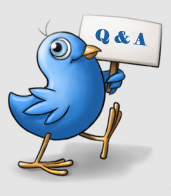 Every month Simone Kaplan answers questions in her newsletter that people send into her. I thought the one she answered this month was a good one that you would be interested in reading. Here it is:
Every month Simone Kaplan answers questions in her newsletter that people send into her. I thought the one she answered this month was a good one that you would be interested in reading. Here it is:
Question: Let’s say a number of good manuscripts come into an editor’s office. All have good grammar, good punctuation, etc.; and all are by first-time writers. In other words, all things are equal. What would make one manuscript stand out so much that the editor would want to publish it? Donna R
Simone’s Answer: First, Donna, I have a question for you: when was the last time you walked into a bookstore and asked for a book with “good grammar, good punctuation, etc.”?
I thought so!
Good grammar, clear sentences, and a cohesive structure are the basic requirements of a manuscript. Without them the manuscript doesn’t stand a chance of publication.
So let’s turn the question around. What were you looking for the last time you went into a bookstore or library? It could have been a book about a subject that intrigues you or the young person you’re with. It could be because you’re looking for a different way to look at bedtime battles or visits to the doctor. It could be because the child you were with loves dinosaurs or trains or fairy princesses. In other words, it could be because of the subject.
But given several books about the subject in which you’re interested, which is the one you’ll pick? I’m willing to bet it’s the one that delights you—or the child you’re with. The one that delivers lovely language, great insights, humor. One that, for whatever reason. is compelling. One that makes you want to read it again.
Editors are looking for the same thing. Something that surprises and delights them, something that makes them sit up and take notice, something that brings a smile to their face, a tear to their eye. They might be looking for manuscripts about specific subjects or in a specific genre. But once that requirement is satisfied, it’s the manuscript they love that is the one they want to publish.
And here’s another thing. When you’re in a bookstore, what is it that makes you hand over your cash or your credit card and decide to take the book home as opposed to get it from the library? The fact that you love it, right? That you think you’ll be able to read it again and again. That it’ll become a meaningful contribution to your family’s literary tradition—and if that sounds pretentious, it’s because it is! But it’s also true.
Editors are looking for the same thing. They need to justify spending upward of $50,000 on the manuscript. They need to be able to want to live with the work, feel that they’ll enjoy working on it, and know that it’ll make a tangible contribution to the bottom line of the house for which they work.
There is much about the publishing process that is fuzzy. Much of it has to do with taste, personal preference, and aesthetic judgment. But publishing is also a business; and there is much that has to do with hard facts, such as how much the book is going to cost to produce, how many copies the sales department feels they can sell, how much revenue the subsidiary rights department feels they can generate.
So the decision about whether or not to publish a book happens at the place where art, business, and taste intersect.
The only way to make sure that your work stands out is to write a stand-out manuscript. And correct grammar and punctuation are only the beginning. So focus on writing your best work. And use spell check!
Have a question for me? Send your question about any aspect of picture book writing that intrigues, confuses, or frustrates you to simone@picturebookpeople.com. It could appear here along with my answer.
 ABOUT SIMONE KAPLAN
ABOUT SIMONE KAPLAN
Simone Kaplan has more than two decades of insider experience at major publishing institutions such as Henry Holt and Company and HarperCollins Publishers, during which she’s personally accepted, edited, and rejected hundreds of children’s picture books. She knows how the words of your manuscript can jump off the page and spark the interest of an editor or agent. She has also learned about the process of creating picture books and can break it down so as to be most useful to authors at every stage of their development.
She provides creativity-enhancing, skill-building, heart-expanding support for the creators of picture books so they can write the best possible books they’re able to write.
Talk tomorrow,
Kathy
Simone has such a wonderful way of getting the right points across 🙂 Thanks for posting this, Kathy, and thanks, Simone!
There really are SO many variables and figuring out who will like what is the hardest thing, I think—that whole “taste” thing, but it has to fit ALL their tastes so the marketing people will agree it’ll sell. Hard thing to do!
Oh, and spell check is a wonderful tool to help us spot mistakes, but not reliable, for sure! I wish it was! lol
LikeLike
By: :Donna Marie on July 2, 2013
at 1:04 am
Reblogged this on Rosemarie Cawkwell and commented:
Useful advice and information 😀
LikeLike
By: R Cawkwell on July 2, 2013
at 7:13 am
Simone is so right. I see a lot of well-written manuscripts by new writers, but the thing that’s often lacking is a compelling hook, a winning concept. Thanks for this post!
LikeLike
By: Tara Lazar on July 2, 2013
at 9:00 am
I’m sharing this post. Super advice.
LikeLike
By: Wendy Greenley on July 2, 2013
at 10:45 am
This is so well said…. couldn’t agree more… 🙂
LikeLike
By: kareninglis on August 7, 2013
at 6:37 pm